Chris Parkin presents this review of the Sako Quad Hunter .17HMR rifle
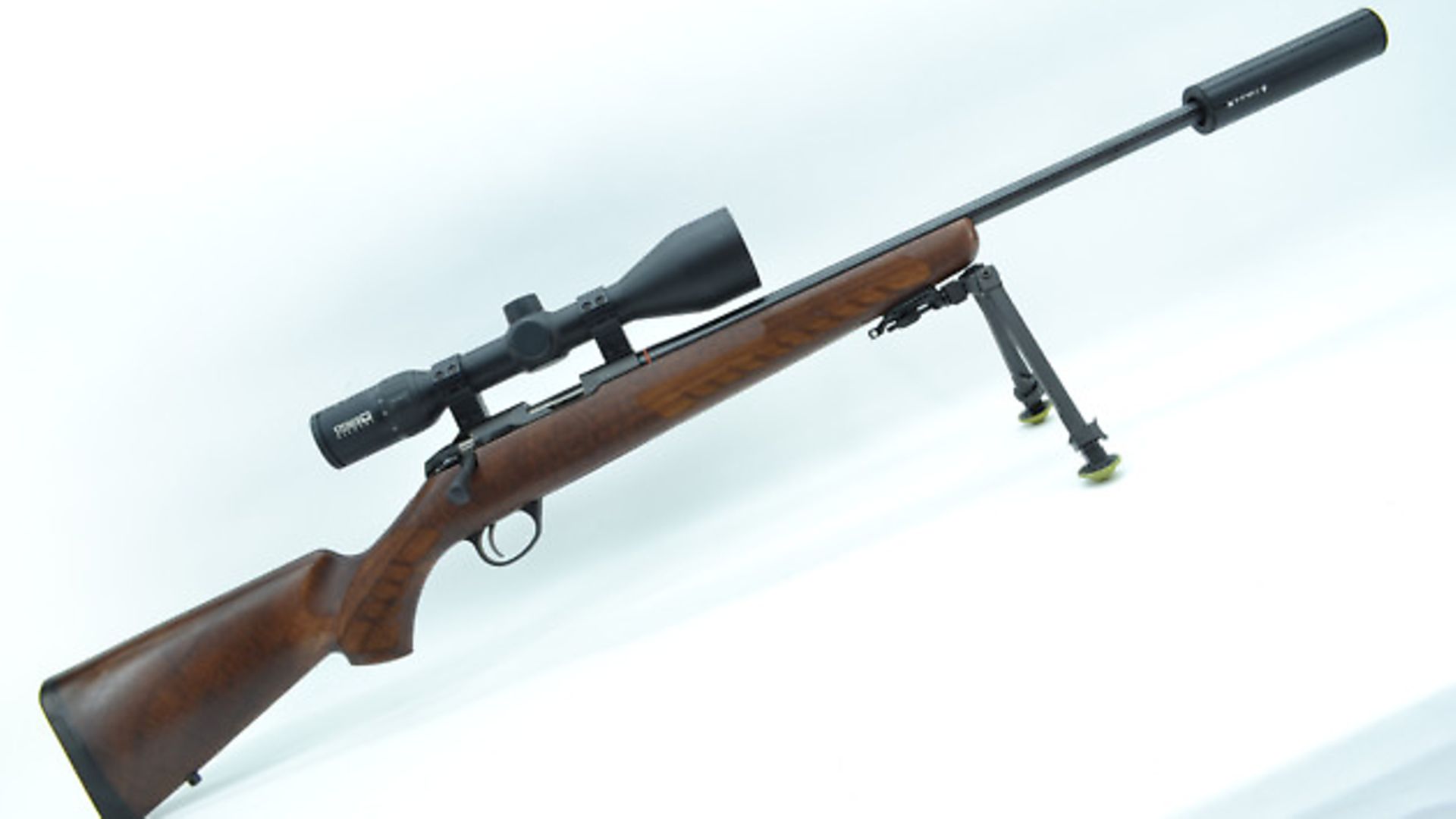 credit: Archant
credit: Archant
Likes
Feeds ALL ammunition types reliably
Full sized ergonomics
Slick bolt and crisp trigger
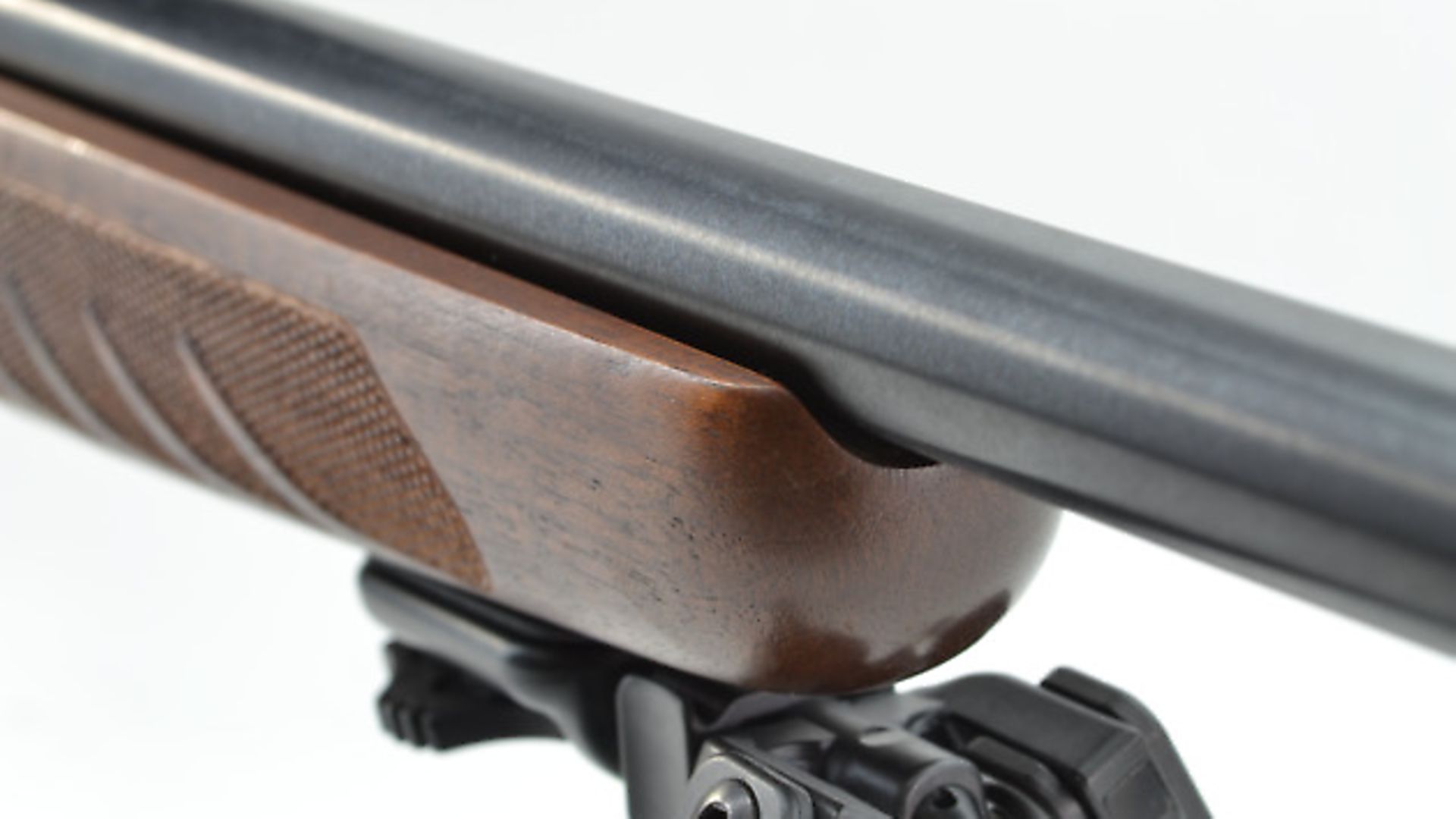 credit: Archant
credit: Archant
Dislikes
Short barrel option?
I personally dislike the coloured band on the barrel
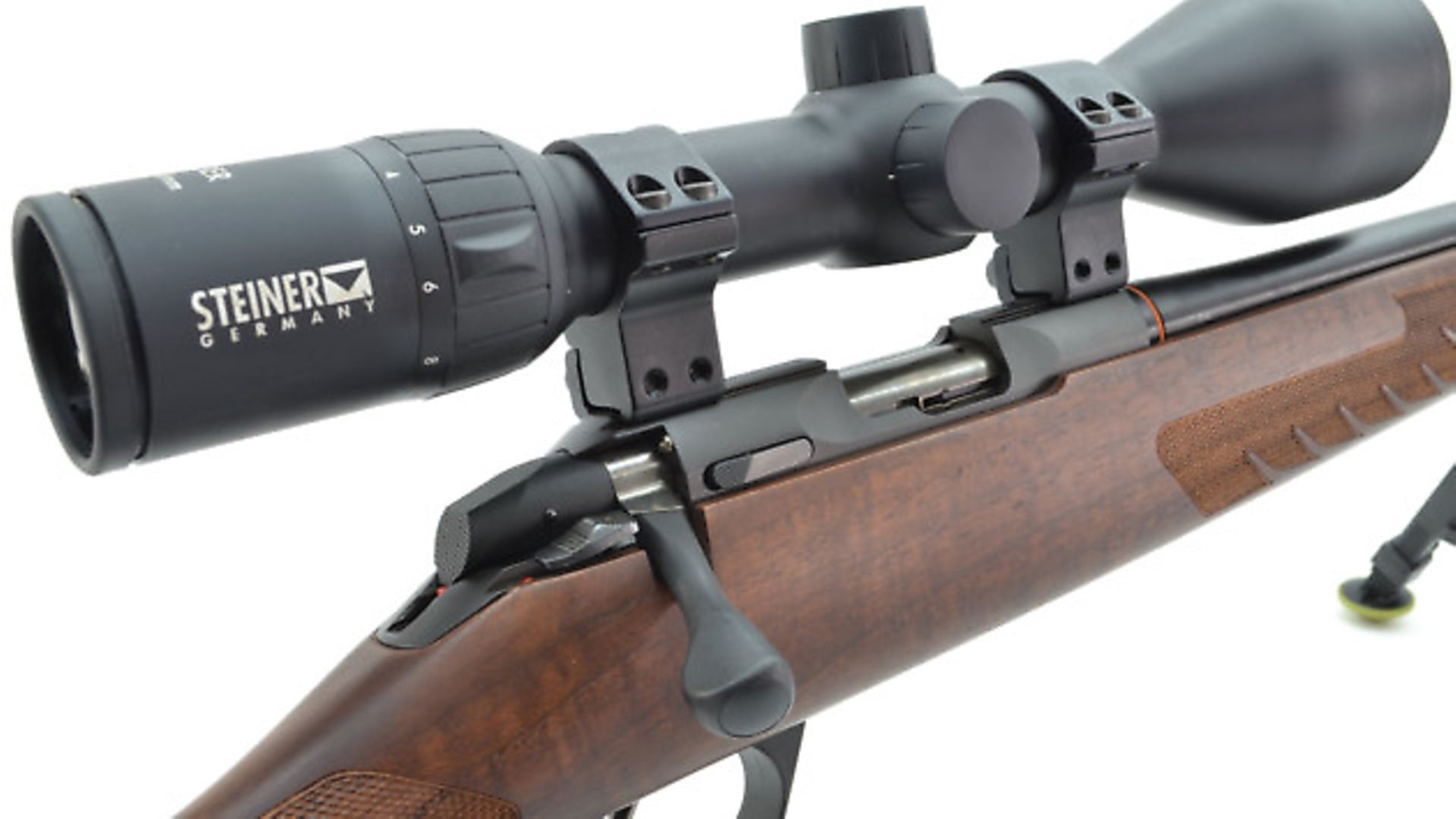 credit: Archant
credit: Archant
Verdict
The Quad always seemed destined to fail as a multi barrel concept, but if you ignore this ability, it is a fantastic gun in its own right and familiarity tempts a second barrel purchase!
Sako Quad Hunter 17 HMR
RRP: £1040 (spare barrels Inc. magazine from £250)
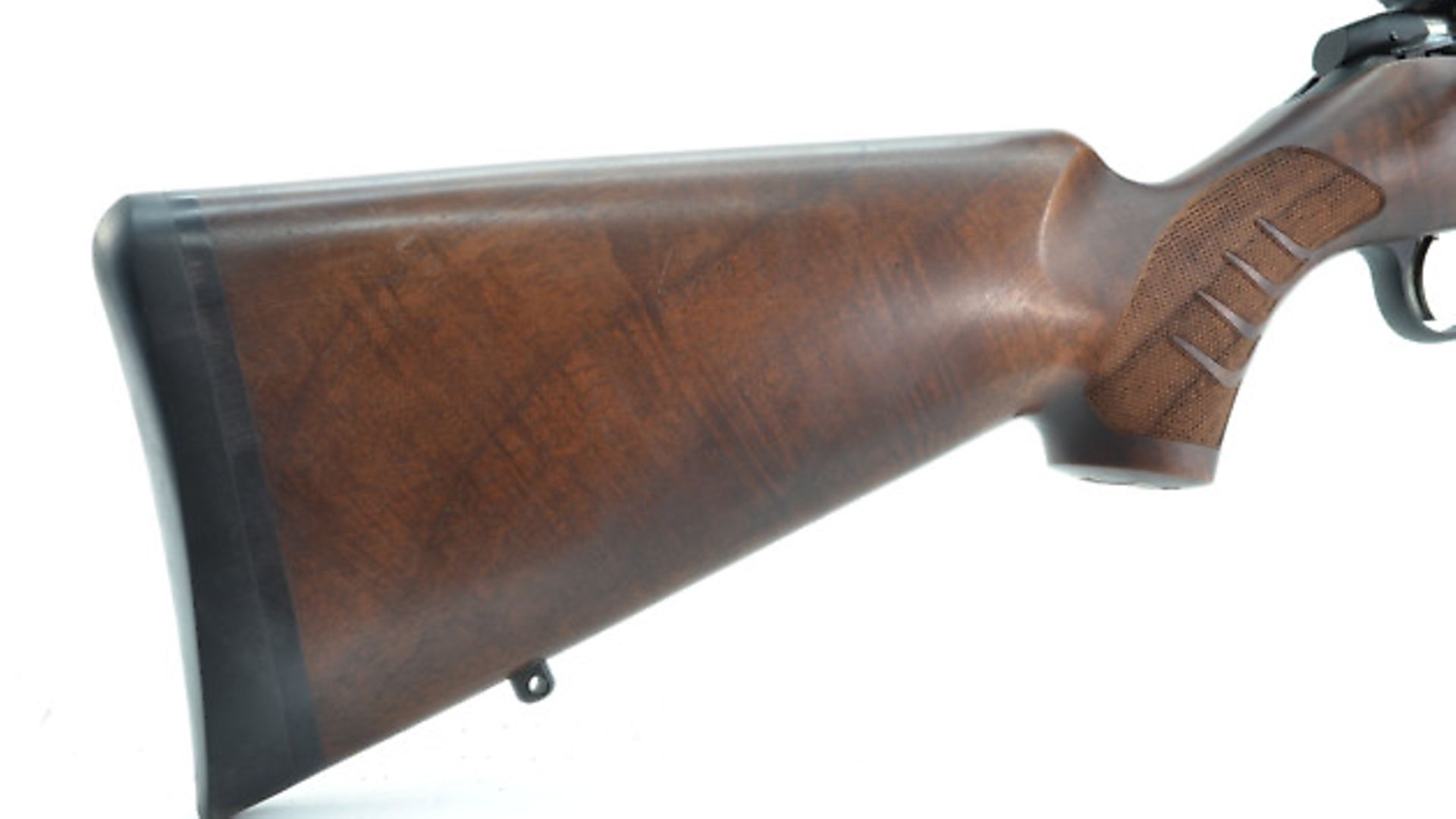 credit: Archant
credit: Archant
Specifications
Overall Length: 1025mm/40”
Weight: 2.8kg/5.5lbs
Barrel length: 560mm/22”, 1 in 9” twist rate. 6 groves
Magazine capacity: Detachable, 5+1 single column feed
Trigger Single stage, adjustable from 500gr to 2000gr, Set trigger also available
Stock: Walnut, fully floating barrel, two sling studs (swivels included)
Screwcut ½” UNF
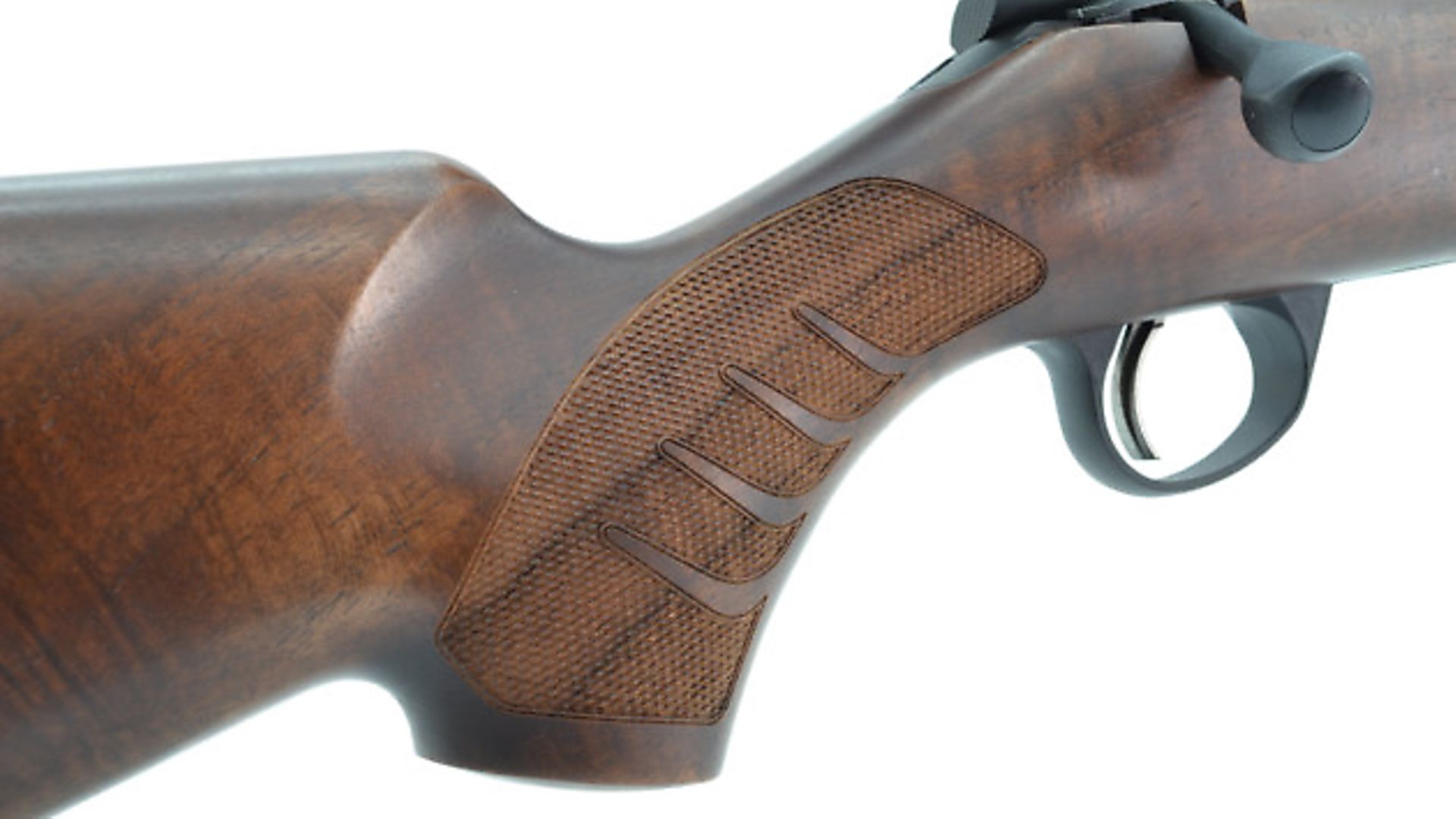 credit: Archant
credit: Archant
Steiner Ranger 3-12x56 Riflescope,
£775
For Sako and Steiner, Contact
GMK, 01489 579999
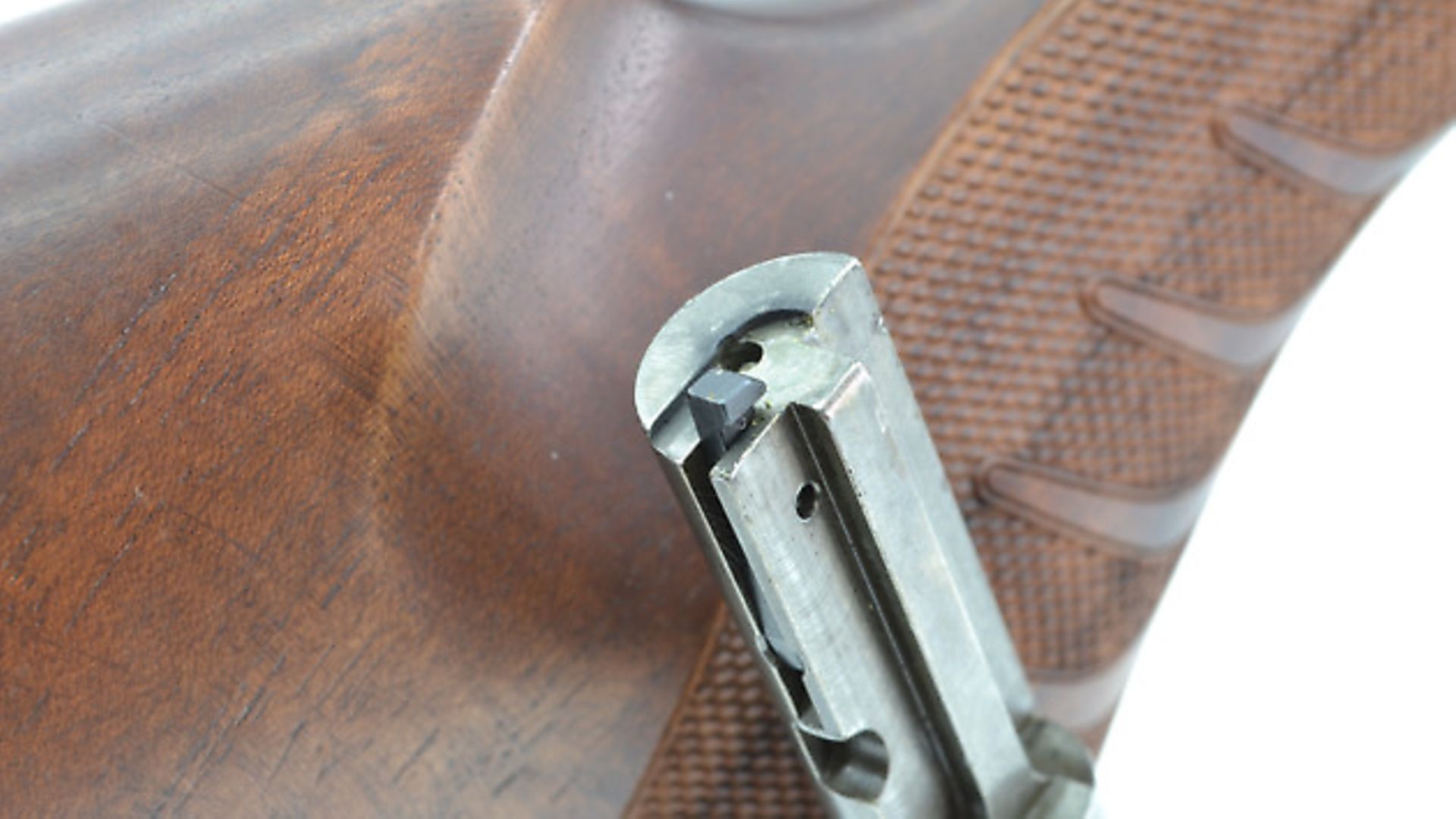 credit: Archant
credit: Archant
Thanks also to
Country Sports Wholesale for Steinert Neopod
01223 208110, www.countrysportswholesale.co.uk
Swillington Shooting Supplies for Yukon Photon, Hornady ammunition, Hogan sound moderator and Sportsmatch scope rings, 0113 286 4097 www.swillingtonshootingsupplies.co.uk
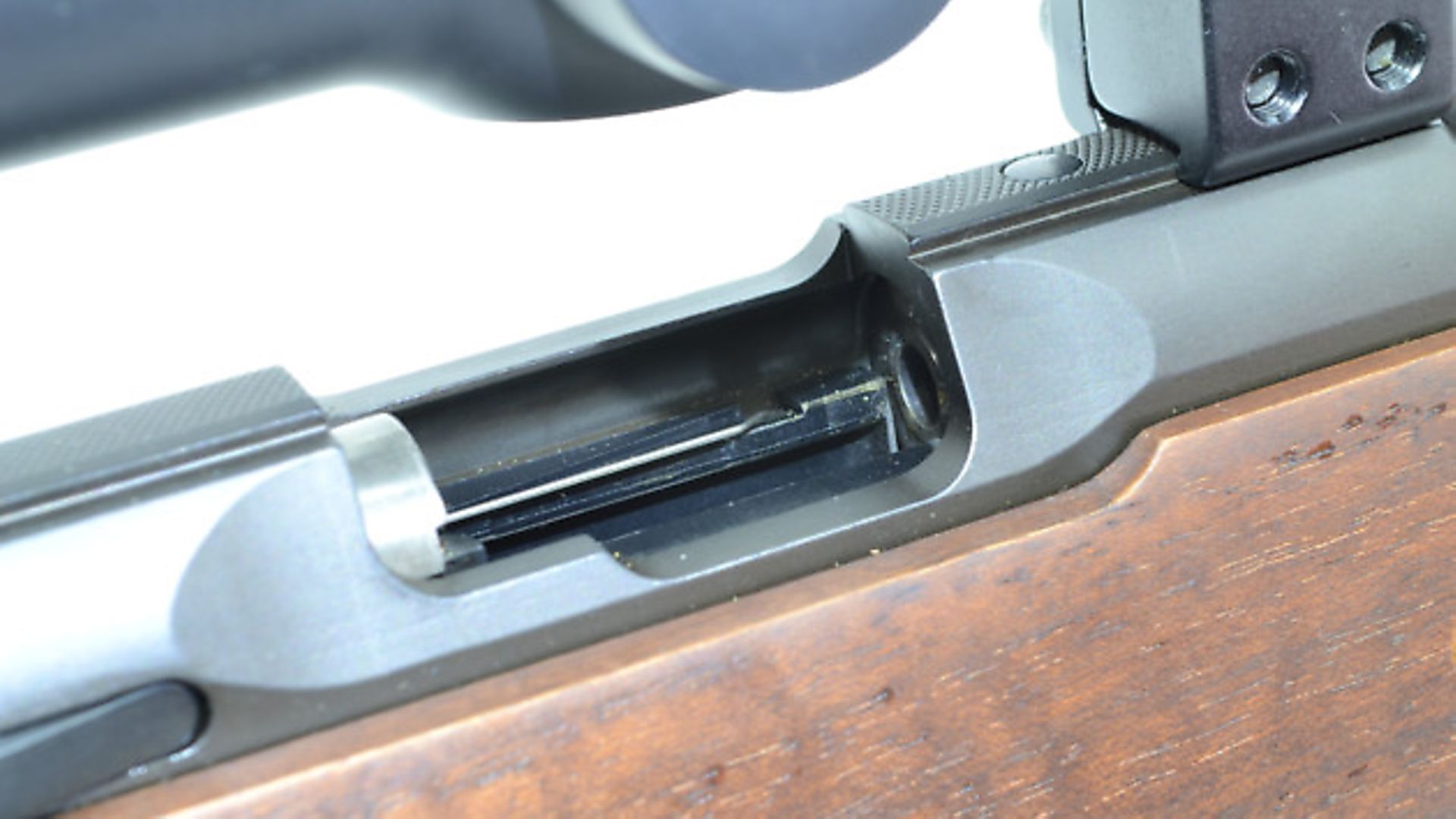 credit: Archant
credit: Archant
IN DEPTH
First on the scene was the .17 HMR; then we saw switch-barrel kits for some .22 rimfires in the ill-fated .17 HM2; and then, finally, Sako launched the Quad for all. The concept of switch-barrel rifles for multiple hunting types and quarry species is not new, but this was the first time the rimfire market had seen it. Other than .22 Long Rifles, which at a push shoot various ‘short’ cartridges, .22 WMR was the only likely competitor and, interestingly, it has seen somewhat of a resurgence; still, would you want any of these alongside the dastardly effective .17 HMR on one rifle chassis?
The concept seemed exciting – and in the low-light situations so familiar to the rimfire hunter, the chance to share a premium ‘high-quality, low-light’ optic between a .22 and a .17 was attractive – but the whole concept soon started to show a few holes: the Quad needed the barrel lifting to release it from the action, which required high or easily removable scope mounts; the second issue was the very likely need for re-zeroing between calibres; and now it all seems to have died a death. I hear of multi-barrel shooters, but I am yet to personally know anyone who has bought into this. The Quad was criticised unfairly for being a poor relation to the legendary Finnfire (because it had plastic parts and only a synthetic stock), and although it sold well in this spec, it was only a matter of time before both varmint and walnut-stocked versions of the gun appeared. So, let’s forget the switch-barrel element of the design; what does this gun really offer as a stand-alone rifle?
Like all other Sakos, the first things you notice are the styling and ergonomics. Sako make adult-sized stocks on all their guns, and the Quad Hunter is no different. Its walnut furniture shows a 343mm/13.5” length of pull which suits the required versatility of a rimfire and, more importantly, it delivers a hand-filling pistol grip and decent height cheekpiece on the straight, well-grained timber. Figuring is minimal, but it isn’t bland in any way, with a deep finish similar to hand-rubbed oil, but a little more synthetic and durable. The grip has an ambidextrous palm swell with comfortable reach to the vertically ribbed trigger that breaks predictably at just under 2lbs (this is adjustable). The laser-cut chequering is slightly unusual in design with finger-spaced ‘ribs’ remaining, which break up the conventional feel of the diamond cuts which are all still traditionally bordered. It is a fine balance between old- and new-world styling, and I think it’s very well presented. Similar patterns are found on the fore-end’s semi-beavertail shape, which is very stiff and fully free-floats the barrel in all situations by a clear 2mm. Sling studs are fitted fore and aft, as well as a 15mm-thick recoil pad to retain the gun well into your shoulder, even though recoil as a disruptive force is hardly an issue.
There is a definite air of original Finnfire about the matt-finished steel action with its angular (some will complain polymer) bolt shroud and faceted walls. The bolt handle is still polymeric but is an almost indescribable shape, merging pyramid and sphere together to become somewhat magically comfortable and quiet at any operational speed! The 55mm-long handle lifts 45 degrees to unlock the twin rear lugs – one of these is the handle itself which, when rising fully, bears onto a hardened steel ball set into the rear of the action’s abutment to force the primary extraction of fired case from chamber walls. It is all very slick and fast at any operational speed with no head-spacing issues or misfeeds.
A two-position safety catch locks the bolt shut when rearward for ‘safe’, and is easily operated by a rolling thumb motion to remain quiet in likely close-quarters hunting situations. The bolt release lever snuggles to the front of the handle below the open upper quadrant of the action, from which spent brass is ejected. Sako’s bolt face carries a single extractor claw, with ejection provided by a spring clip within the left inner bolt raceway. I have heard of these breaking on the old Finnfire, but have yet to experience this problem myself, or any likelihood of it happening. All ammunition fed and ejected perfectly from the single column five-round magazine, which has a single sprung detent catch, at its front below the action. Like the barrels, magazines are colour-coded to match your chosen calibre. Familiar 11mm dovetails sit atop the action, deeply machined into the steel for a secure and repeatable mounting set-up, which I find increasingly important when swapping day and night optics. The barrel is 22”/560mm, which I find too long to be honest, with 18” being my preferred maximum in the .17 HMR calibre; 16” being even more desirable. Generally, either will achieve full velocity value from the cartridge’s powder capacity. Its supplied screw-cut ½” is ideal for any add-on moderator available; were I keeping this gun, it would get chopped immediately.
I ran accuracy testing and initial set-up using a cracking Steiner Ranger 3-12x56 scope which perfectly suited the rimfire’s low-light hunting world. I hear many tales of .17 HMR ammunition quality issues, and must admit that I don’t think it is as good as it was 10 years ago when it first appeared; still, it nearly holds the magic 1” mark at 100 yards, and I’m more interested in functional reliability from the bolt, magazine and feed ramp, which here was, thankfully, perfect. I like the 20gr XTP bullets from Hornady, and my instinct is that smaller production volumes of this specification return slightly more consistently, but that is my personal opinion. So far, the only thing I don’t like about this gun is the orange plastic collar wrapped around the barrel reinforce that badges the tube as .17 HMR, rather than any other option, and I have no desire or intention to change the tube, which is done by slackening a single 5mm Allen bolt, accessible through the bottom ‘metal’ (in this case, polymer) of the rifle just in front of the magazine. There is plenty of dovetail rail space for scope mounting, which is a joy, and depending on the length of your chosen optic you can still change barrels without undue hassle. My moderately-sized scope, extending 102mm beyond the front of the action and sitting 7mm above the barrel, did not interfere with any perspective barrel change. Swapping the barrel out and back in did give a slight shift in average zero, but to be honest .17 HMR ammo, batch to batch, shifts more than the couple of clicks; I’m not going to be concerned. Closing the bolt on the gun checks the head-space before retightening it firmly. It’s actually really hassle free, contrary to popular opinion, and definitely ‘best in class’. I inspected every fired case and, although the usual splits were present on some, primer strikes from the firing pin were deep and well defined, which I find very reassuring on a rimfire.
This Quad Hunter is actually a very likeable rifle. I tried a Finnfire II recently and, although many of the features and resultant accuracy of the two guns are disturbingly similar, this Quad Hunter seemed to run a little slicker, feed a little smoother, and shoot just a tiny bit better; but, again, ammo varies. Most importantly for me is that I was able to shoot the XTP from this rifle, which the Finnfire II had refused to feed, and this alone has given me an accuracy benefit over the 17gr standard ballistic tip bullet. One hundred per cent functionality on a gun which is likely to be used in the dark – when you don’t want to be messing about with anything other than changing magazines – is mandatory, and I got that with this rifle from the start. So much so, I was quick to switch to fitting my Yukon Photon for forays after rabbits in the dark, for the point-and-shoot performance out to 120-140m that my land requires. Some rifles make you really look for a reason to like them, yet others you find almost boring because they just do what is required and you are left wondering why you like them so much! To put it simply, everything about the Sako (except the daft orange circle) works together in perfect harmony to make this a truly shootable rifle, and one which I am very tempted to keep, possibly even at the expense of selling my own .22 and buying an extra barrel for this one.
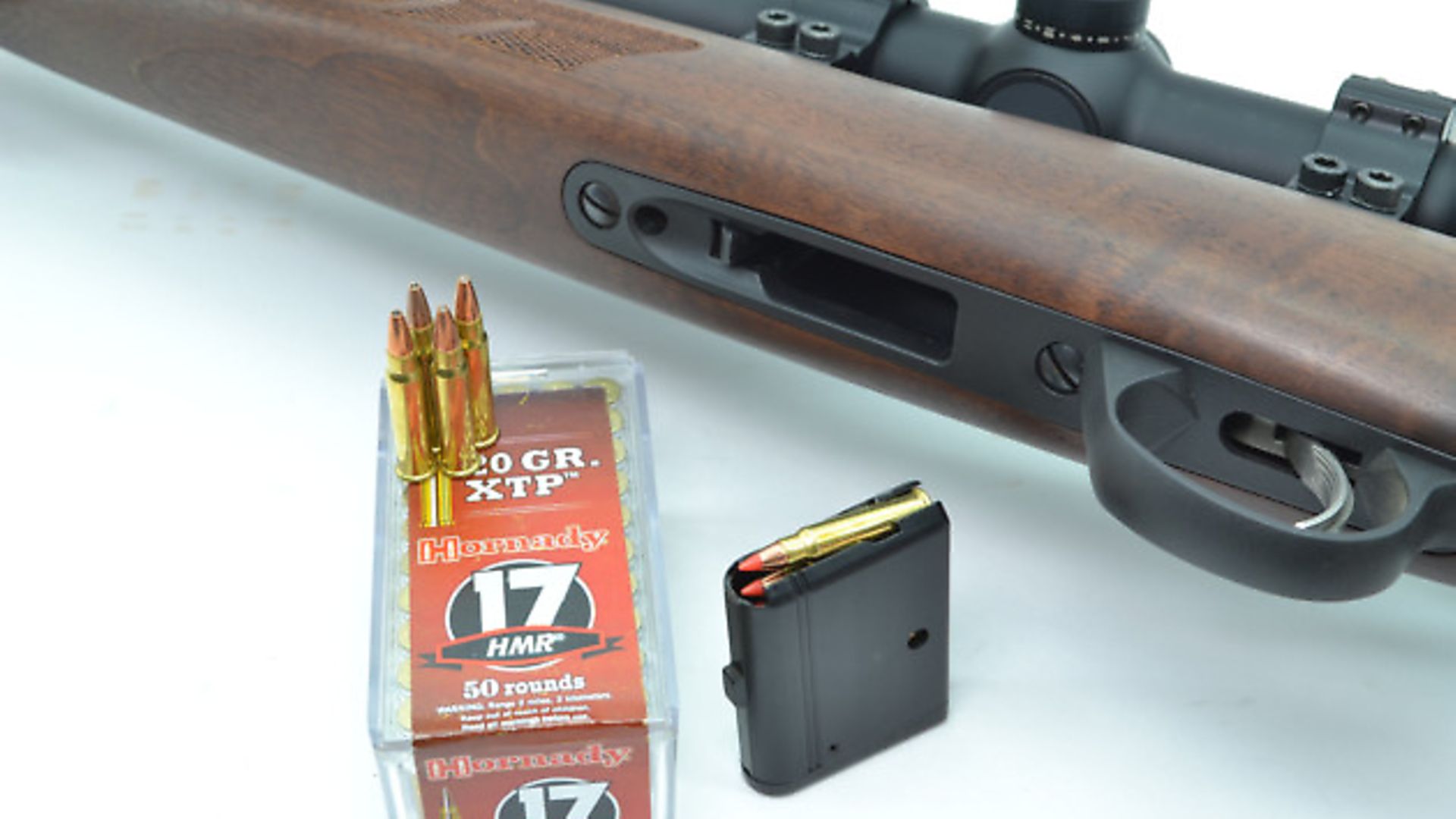 credit: Archant
credit: Archant
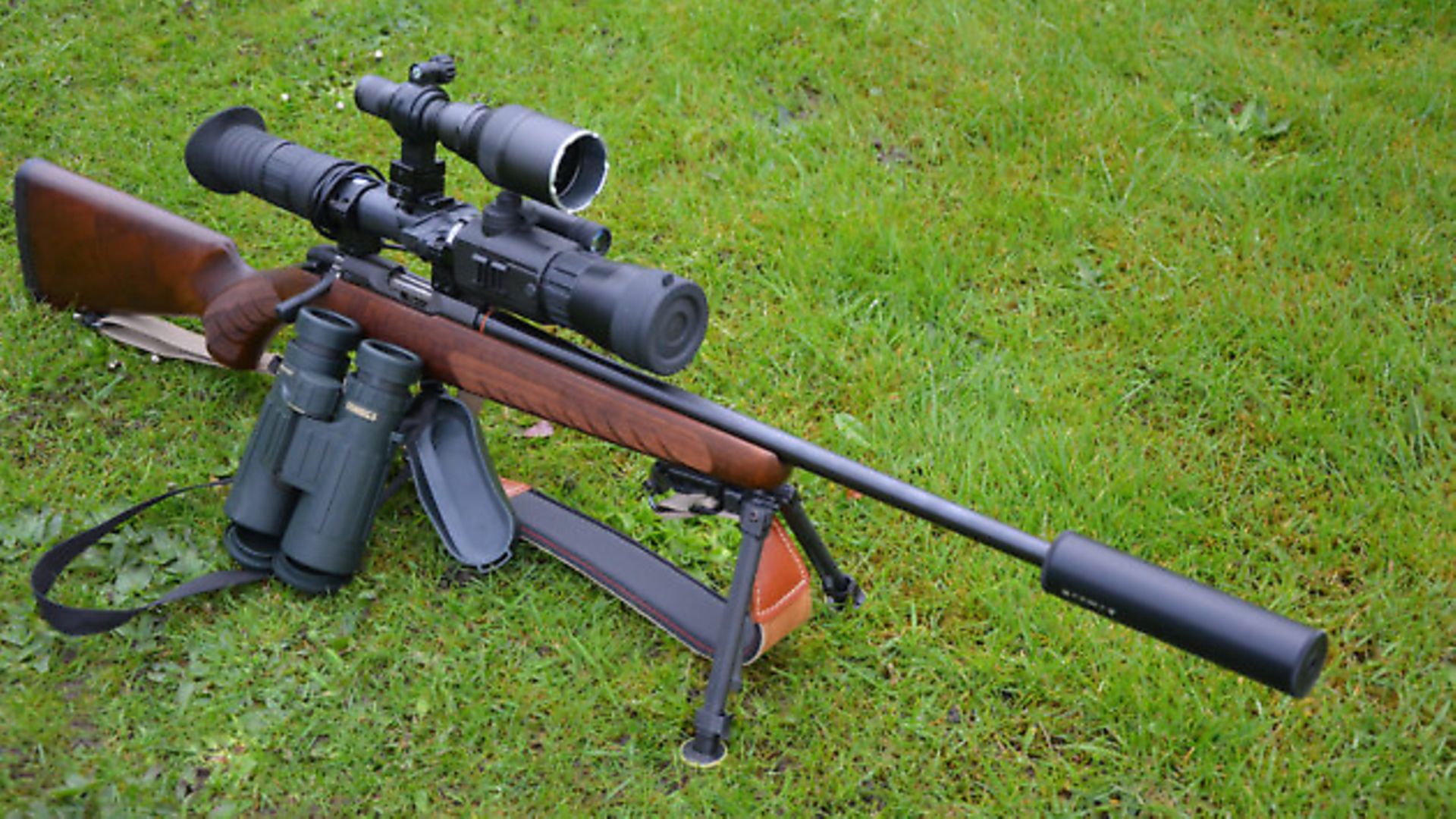 credit: Archant
credit: Archant